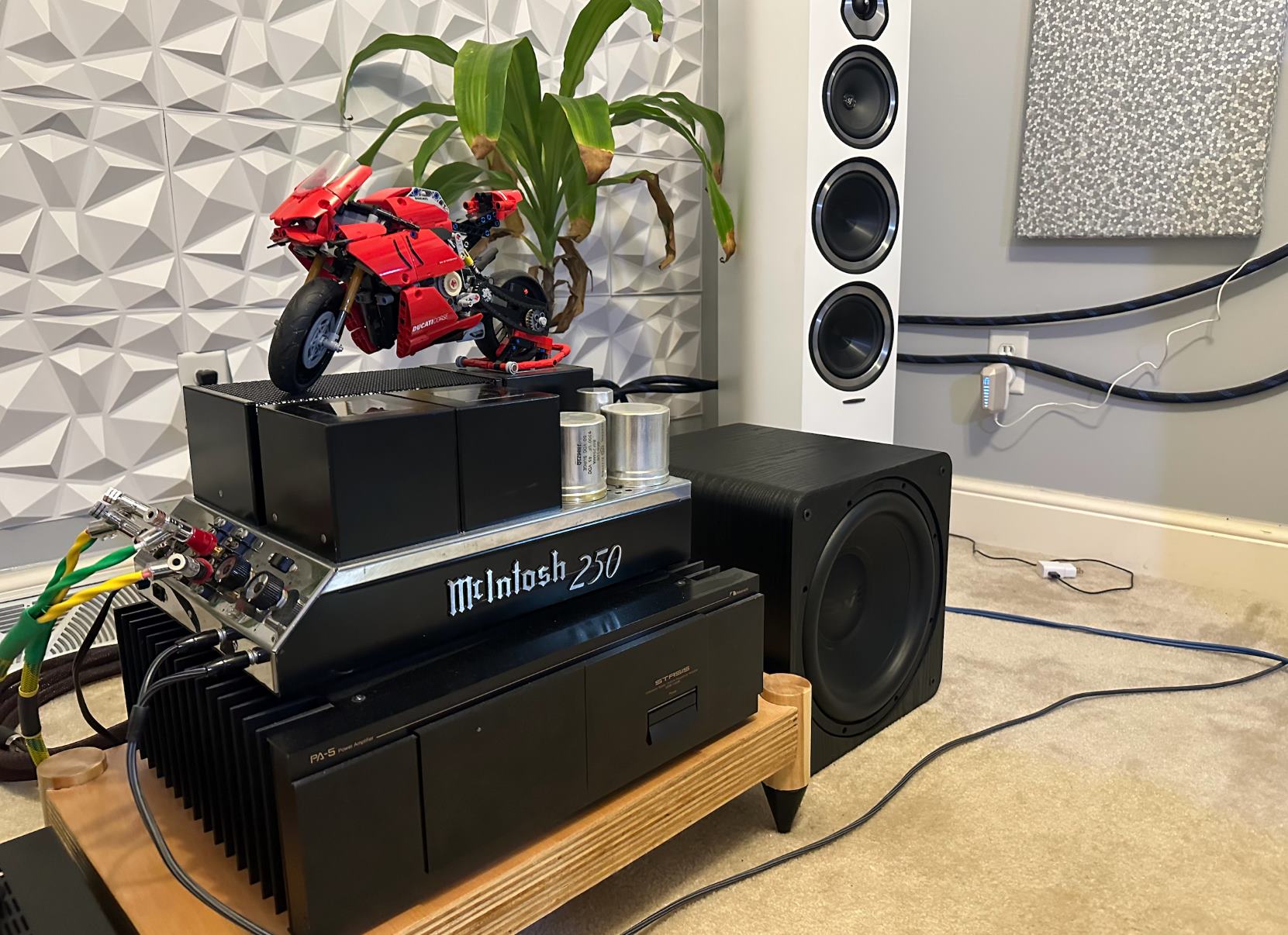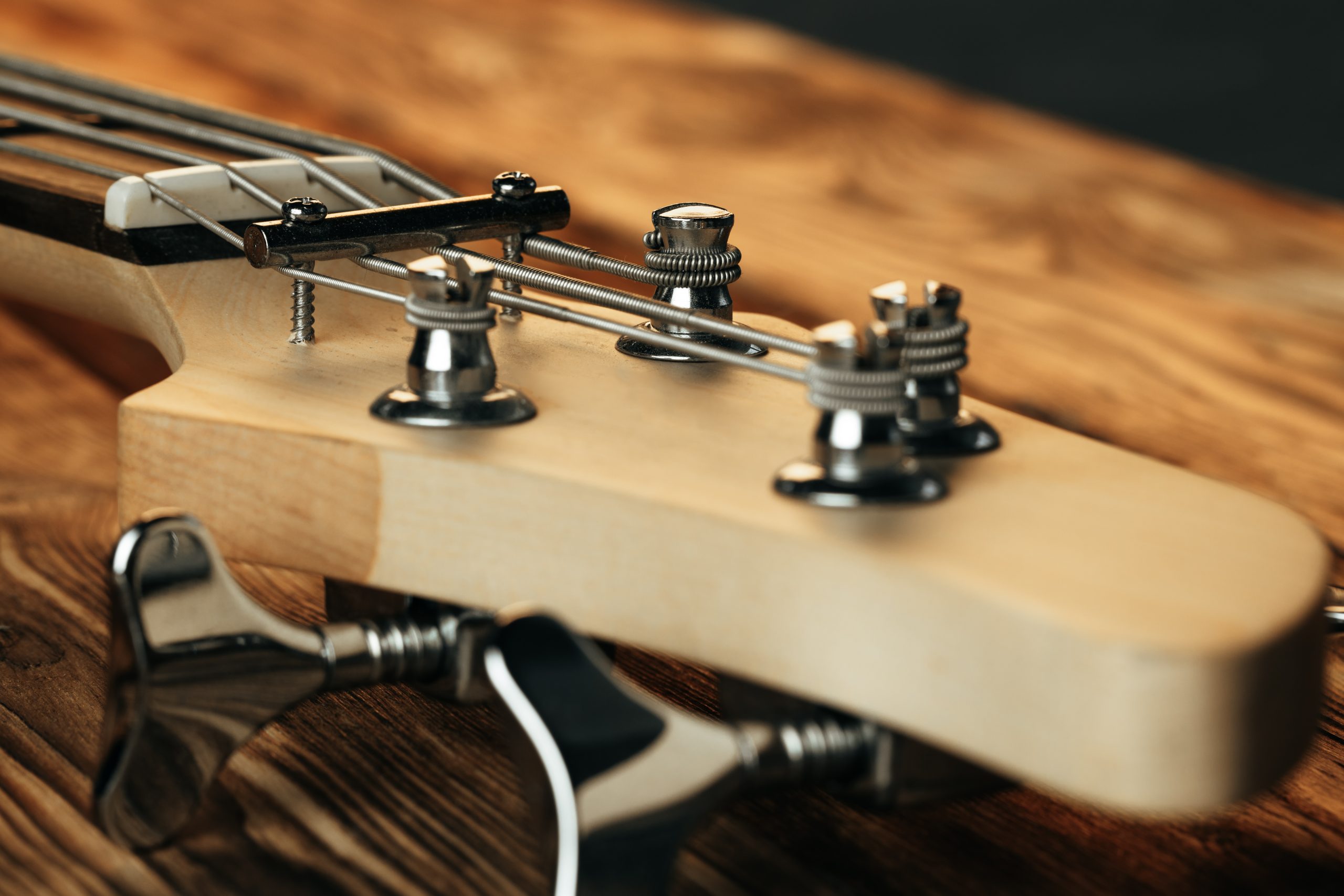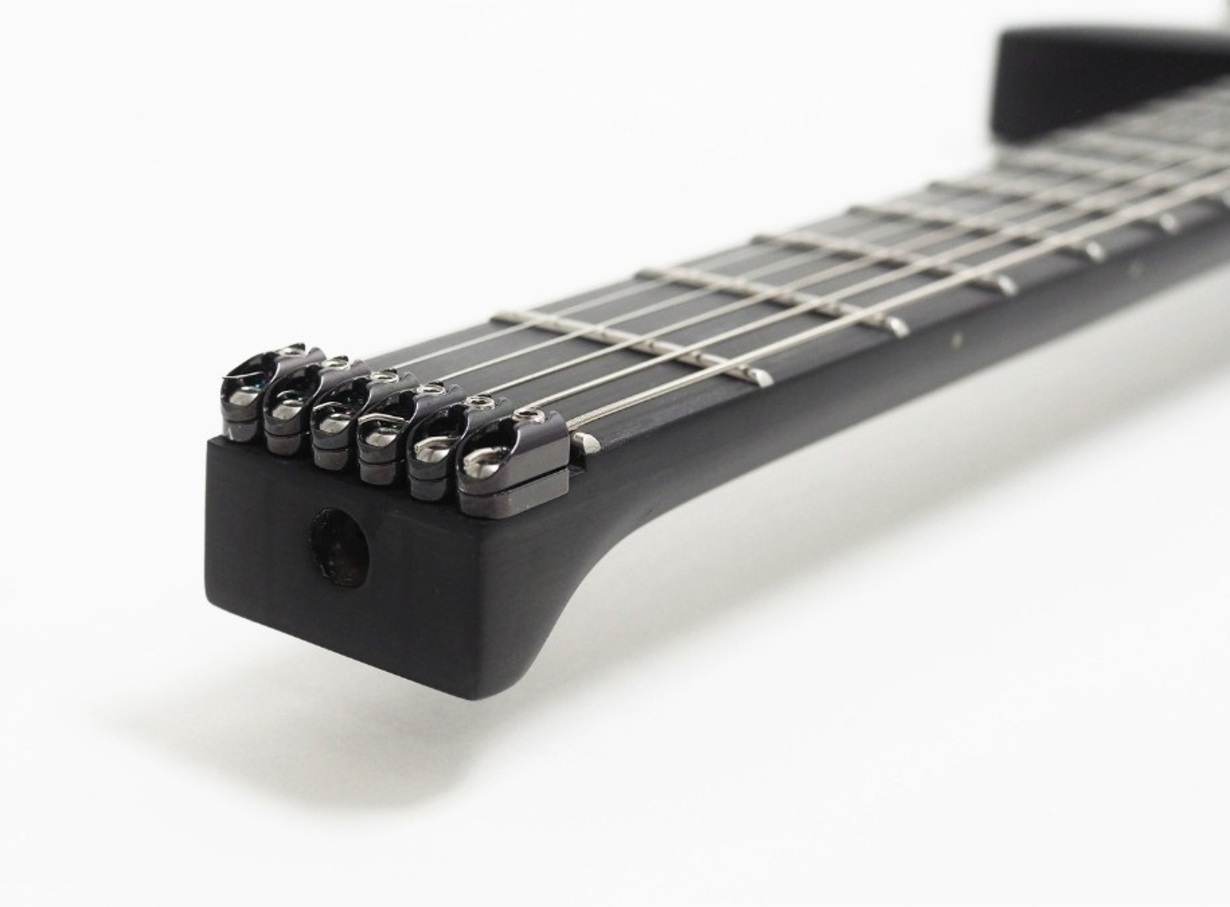Home>Devices & Equipment>Subwoofer>How To Tune Your Subwoofer


Subwoofer
How To Tune Your Subwoofer
Published: January 21, 2024
Learn how to effectively tune your subwoofer for optimal sound quality and performance. Expert tips and tricks for getting the most out of your subwoofer.
(Many of the links in this article redirect to a specific reviewed product. Your purchase of these products through affiliate links helps to generate commission for AudioLover.com, at no extra cost. Learn more)
Table of Contents
Introduction
Welcome to the world of subwoofers! These powerful audio devices can take your music listening and movie watching experiences to the next level by adding deep, impactful bass to your audio setup. However, simply plugging in a subwoofer and turning up the volume may not give you the best sound quality. To truly unlock the full potential of your subwoofer, it’s important to understand how to tune it properly.
Tuning your subwoofer involves a series of adjustments that optimize its performance and integration with your existing audio system. This process ensures that the subwoofer reproduces low-frequency sounds accurately and in harmony with your speakers, creating a well-balanced and immersive audio experience.
In this article, we will explore the essential steps to effectively tune your subwoofer for optimal performance. We’ll cover everything from finding the ideal placement for your subwoofer to adjusting crossover frequencies and fine-tuning with equalization (EQ).
Whether you’re a seasoned audiophile or a newbie to the world of subwoofers, this guide will equip you with the knowledge and techniques you need to make the most out of your subwoofer investment.
Understanding Subwoofer Tuning
Before we dive into the specifics of tuning your subwoofer, it’s important to grasp the basic concepts behind subwoofer tuning. Subwoofers are designed to reproduce deep bass frequencies, typically ranging from 20Hz to 200Hz, which are crucial for enhancing the overall audio experience.
The first step in understanding subwoofer tuning is getting familiar with the different control options available on your subwoofer. Most subwoofers feature controls for volume, phase, crossover frequency, and sometimes even equalization (EQ).
Volume control allows you to adjust the loudness of the subwoofer relative to your main speakers. Phase control ensures that the subwoofer’s sound waves are in sync with those produced by your speakers, minimizing any potential cancellation or reinforcement issues. Crossover frequency control determines the point at which the subwoofer begins to reproduce sounds, usually between 50Hz to 150Hz.
When it comes to tuning your subwoofer, there are several factors to consider, such as the room acoustics, subwoofer placement, and integration with your speakers. Properly tuning your subwoofer will result in a cohesive and seamless soundstage, where the bass seamlessly blends with the rest of the audio frequencies.
It’s important to note that subwoofer tuning is not a one-size-fits-all process. The optimal settings for your subwoofer will depend on various factors, including the size and layout of your room, the type of speakers you have, personal preferences, and the characteristics of the audio content you are listening to.
In the next sections, we’ll delve into specific techniques for optimizing your subwoofer’s performance, starting with finding the right placement for your subwoofer in your listening environment.
Finding the Optimal Placement
The placement of your subwoofer plays a crucial role in achieving the best sound quality. The goal is to find a position that minimizes acoustic issues and maximizes bass response throughout the room. Here are some tips to help you find the optimal placement for your subwoofer:
- Experiment with placement: Start by placing your subwoofer in the front of the room, ideally at the same height as your speakers. While this is a common placement, it may not always provide the best results. Experiment with different positions, such as corners, side walls, or even behind the listening area. Each room has unique characteristics that may affect bass reproduction, so don’t be afraid to try different locations.
- Consider room modes: Room modes are standing waves that can cause certain frequencies to be louder or quieter in different areas of the room. To minimize the impact of room modes, try placing the subwoofer at different distances from the walls. You can also use room correction software or bass traps to mitigate any excessive resonances.
- Use the subwoofer crawl: The subwoofer crawl is a technique that involves physically placing yourself at the listening position and crawling on the floor to find the spot where the bass sounds the most balanced and impactful. Start by playing a bass-heavy track and listen for any boomy or weak spots. Adjust the position of the subwoofer until you find the sweet spot where the bass is even and well-integrated with the rest of the audio.
- Consider symmetry: If possible, try to achieve symmetry in your room setup. Placing the subwoofer equidistant from side walls and center speakers can help create a more consistent bass response. However, keep in mind that the optimal placement may still deviate from perfect symmetry based on room acoustics and other factors.
- Avoid placing the subwoofer too close to walls or corners: While it may be tempting to tuck your subwoofer into a corner for space-saving purposes, this can often result in boomy and overpowering bass. Try to maintain some distance between the subwoofer and walls or corners to allow for better dispersion of low-frequency sound waves.
Remember, finding the optimal placement for your subwoofer may require some patience and experimentation. Take the time to listen to different placements and make adjustments until you achieve the best possible bass response throughout the room.
Correcting Phase Alignment
Phase alignment refers to the synchronization of the subwoofer’s sound waves with the sound waves produced by your main speakers. When the phase is properly aligned, it ensures that the low-frequency sounds from the subwoofer arrive at the same time as the sounds from the main speakers, resulting in a seamless and coherent audio experience.
Here are the steps to correctly align the phase of your subwoofer:
- Identify the phase switch: Locate the phase switch on your subwoofer. It is usually labeled “0°” and “180°”.
- Listen for cancellation or reinforcement: Start by playing a bass-heavy track with the phase switch set to “0°”. Listen carefully to the bass response and pay attention to any cancellation or reinforcement of low frequencies. If you notice a dip or thinning of bass in certain areas, continue to the next step.
- Switch the phase: Change the phase switch to “180°” and listen again. Take note of any improvements or changes in the bass response. In some cases, switching the phase can help correct any cancellation or reinforcement issues.
- Fine-tune the phase: If you still notice inconsistencies in the bass response, you may need to fine-tune the phase further. Most subwoofers offer a gradual phase adjustment knob that allows you to make small phase adjustments. Try experimenting with different settings to find the best phase alignment.
- Verify the phase alignment: To verify if the phase alignment is correct, play a variety of audio tracks with different bass frequencies and listen for a well-integrated and balanced bass response. There should be no noticeable gaps or overlaps between the subwoofer and the main speakers.
Correcting phase alignment is crucial for achieving a cohesive and accurate bass reproduction. Take your time to carefully adjust the phase settings and listen for any improvements in the bass response. Remember that the ideal phase alignment may vary depending on the specific characteristics of your room and audio system.
Adjusting Crossover Frequency
The crossover frequency determines the point at which your subwoofer takes over the reproduction of low-frequency sounds from your main speakers. Finding the optimal crossover frequency is essential for achieving a seamless transition between your speakers and subwoofer, ensuring that each handles the appropriate frequency range.
Here are the steps to adjust the crossover frequency:
- Understand your speakers and subwoofer capabilities: Start by identifying the frequency response of your main speakers and subwoofer. This information is usually provided in the user manual or specifications sheet. Look for the frequency range at which your speakers start to roll off and the frequency range at which your subwoofer begins to reproduce sound.
- Set the initial crossover frequency: Begin by setting the crossover frequency around the lower end of your main speakers’ frequency response. This initial setting allows your speakers to handle most of the mid-range frequencies, while the subwoofer focuses on reproducing deep bass.
- Listen and refine: Play music or audio with a wide range of frequencies and listen for any audible gaps or overlaps between the speakers and the subwoofer. If you notice a gap in the frequency response where neither the speakers nor the subwoofer are reproducing sound, adjust the crossover frequency accordingly. Gradually increase or decrease the frequency until you achieve a smooth transition between the speakers and the subwoofer.
- Tweak for personal preference: Fine-tune the crossover frequency based on your personal preference. Some individuals prefer a more pronounced bass, while others prefer a more balanced sound. Experiment with different crossover frequencies to find the setting that suits your taste and listening environment.
Keep in mind that the ideal crossover frequency may vary depending on your specific speakers, subwoofer, room acoustics, and personal preference. It’s important to continually listen and make adjustments until you find the sweet spot where the sound seamlessly transitions between the speakers and the subwoofer.
Setting the Subwoofer Level
Setting the level of your subwoofer ensures that it blends smoothly with your main speakers and creates a balanced soundstage. The goal is to achieve a cohesive and immersive audio experience, where the subwoofer enhances the low-frequency content without overpowering or dominating the overall sound quality.
Here are the steps to properly set the level of your subwoofer:
- Start with a neutral position: Begin by setting the subwoofer level to the neutral or default position. This allows you to establish a baseline for further adjustments.
- Play music or audio content: Choose a piece of music or audio that reflects the typical content you will be playing through your audio system. It’s best to select something with a balanced mix of frequencies, including bass-heavy passages.
- Listen for balance: Play the chosen content at a moderate volume and focus on the overall sound balance. Pay attention to how the subwoofer integrates with the main speakers. If the bass sounds too weak or lacking impact, gradually increase the subwoofer level. If the bass becomes overwhelming or overpowering, reduce the subwoofer level.
- Use reference tracks: To ensure the subwoofer level is accurate, you can use reference tracks specifically designed for subwoofer tuning. These tracks often include frequency sweeps and bass-heavy passages that allow you to fine-tune the subwoofer level more precisely.
- Consider room size and personal preference: The size of your room and your personal preference for bass impact may also influence the subwoofer level. Smaller rooms may require lower subwoofer levels to avoid excessive bass buildup, while larger rooms may benefit from a slightly higher level for a more immersive experience. Adjust the subwoofer level to suit your room characteristics and personal preferences.
Remember, setting the subwoofer level is a subjective process that depends on your listening environment and personal taste. Take your time to carefully listen and make adjustments until you achieve a balanced and enjoyable soundstage.
Fine-tuning with EQ
Equalization (EQ) is a powerful tool that allows you to adjust the frequency response of your subwoofer to compensate for any room anomalies or personal preferences. Fine-tuning with EQ can help you achieve a more accurate and balanced bass reproduction, ensuring that your subwoofer performs optimally in your specific listening environment.
Here are the steps to fine-tune your subwoofer with EQ:
- Identify problematic frequencies: Play audio content that incorporates a wide range of frequencies and listen for any notable peaks or dips in the bass response. These dips or peaks may be caused by room resonances or other acoustic issues. Take note of the frequencies that need adjustment.
- Use an EQ tool: Many AV receivers or subwoofer amplifiers come equipped with built-in EQ capabilities. Alternatively, you can use external digital equalizer units or software plugins to adjust the EQ settings. These tools allow you to manipulate specific frequency bands to achieve the desired response.
- Address frequency peaks and dips: Begin by addressing any significant frequency peaks or dips in the bass response. Increase or decrease the corresponding EQ bands to flatten the frequency response as much as possible. Use a gradual and subtle approach to avoid overly affecting the overall audio balance.
- Consider room correction systems: If you prefer a more automated approach, consider investing in a room correction system that utilizes measurements and advanced algorithms to optimize the bass response in your room. These systems can help identify and correct problematic room resonances more accurately.
- Make incremental adjustments: Fine-tuning with EQ is an iterative process. Make small and incremental adjustments, then listen and evaluate the results. Take your time to experiment and find the best EQ settings that complement your listening preferences.
Keep in mind that EQ adjustments should be made judiciously to preserve the natural tonal balance of the audio. Too much boosting or cutting can lead to an artificial and unbalanced sound. Strive for a smooth and cohesive bass response that seamlessly integrates with the rest of the audio frequencies.
It’s important to note that EQ adjustments are highly dependent on your room acoustics and personal preferences. Take the time to experiment and fine-tune until you achieve a sound that satisfies your musical tastes and complements your listening environment.
Testing and Evaluating the Results
Once you have completed the initial tuning and adjustments of your subwoofer, it’s crucial to test and evaluate the results to ensure that you have achieved the desired audio performance. Testing will help you identify any remaining issues or fine-tuning requirements that may further enhance the overall sound quality.
Here are some steps to effectively test and evaluate the results of your subwoofer tuning:
- Use a variety of audio content: Play different types of audio content, including music, movies, and games, to test the subwoofer’s performance across various genres and soundscapes. This will allow you to assess how well the subwoofer integrates with different audio content.
- Listen for balance and cohesion: Pay attention to the seamless integration of the subwoofer with your main speakers. The bass should sound balanced and cohesive, enhancing the overall audio experience without overpowering or distorting other frequencies. Ensure that there are no gaps or overlaps between the bass and the rest of the audio.
- Evaluate low-frequency extension: Assess the subwoofer’s ability to reproduce deep bass frequencies. The bass should be tight, impactful, and defined, providing a solid foundation to the audio without excessive boominess or muddiness.
- Check for distortion or artifacts: Listen carefully for any distortion, clipping, or unwanted artifacts in the bass response. If you notice any unwanted noise or distortion, go back to the previous steps to recheck your settings and make necessary adjustments.
- Consider subjective preferences: Remember to evaluate the sound based on your personal preferences. Everyone has different taste when it comes to audio, so ensure that the overall sound signature aligns with your desires and provides an enjoyable listening experience.
During the testing process, take your time and make incremental changes as needed. Fine-tuning a subwoofer is an iterative process, and it may require several rounds of adjustments to achieve the desired results.
Remember that room acoustics, speaker characteristics, and personal preferences all play a role in the final audio performance. Trust your ears and make adjustments accordingly to achieve the best possible sound quality from your subwoofer.
Troubleshooting Common Issues
While tuning your subwoofer, you may encounter some common issues that can impact its performance. Understanding these issues and knowing how to troubleshoot them will help you optimize the sound quality of your subwoofer. Here are some common problems and their solutions:
- Boomy or overpowering bass: If the bass sounds overwhelming or boomy, it may be due to the subwoofer’s placement. Try moving the subwoofer away from walls or corners, as this can help reduce excessive bass buildup. Additionally, adjusting the subwoofer level or applying EQ to tame the lower frequencies can help achieve a more balanced sound.
- Weak or thin bass: If the bass sounds weak or lacking impact, it could be due to improper subwoofer placement or incorrect crossover settings. Experiment with different placement options and adjust the crossover frequency to ensure that the subwoofer is handling the appropriate frequencies. You can also increase the subwoofer level or apply EQ to boost the low-end response.
- Phase cancellation: Phase cancellation occurs when the sound waves from the subwoofer and main speakers are out of sync, causing certain frequencies to cancel each other out. To troubleshoot phase cancellation, try adjusting the phase control on the subwoofer. Switch between the “0°” and “180°” settings and listen for a more balanced and cohesive bass response.
- Inconsistent bass response throughout the room: Room acoustics can significantly impact the bass response. To address inconsistencies, consider using bass traps or room correction software to mitigate room resonances. Experiment with subwoofer placement and listening positions to find the spot with the most balanced bass response throughout the room.
- Distortion at high volumes: If you experience distortion or clipping at high volume levels, it could indicate that the subwoofer is being overdriven. Reduce the volume or adjust the subwoofer level to prevent excessive power being sent to the subwoofer. Ensure that the amplifier or receiver powering the subwoofer is capable of providing sufficient power for optimal performance.
If troubleshooting these common issues does not resolve the problem, consider reaching out to a professional audio technician or consulting the user manual of your subwoofer for further guidance. Remember that fine-tuning a subwoofer requires patience and experimentation to achieve the best possible sound quality for your specific setup and listening environment.
Conclusion
Tuning your subwoofer is a crucial step in optimizing the performance of your audio system and achieving a well-balanced and immersive sound experience. By following the steps outlined in this guide, you can ensure that your subwoofer seamlessly integrates with your speakers, reproduces deep bass accurately, and enhances your overall audio enjoyment.
Start by finding the optimal placement for your subwoofer, considering room acoustics and symmetry. Correcting phase alignment, adjusting the crossover frequency, and setting the subwoofer level are critical aspects that help achieve a cohesive and balanced soundstage. Additionally, fine-tuning with equalization allows you to compensate for room anomalies and personal preferences, further enhancing the bass reproduction.
Once you’ve completed the initial tuning, it’s important to test and evaluate the results using a variety of audio content. Listen for overall balance, cohesive integration, low-frequency extension, and any possible distortion or artifacts. Make incremental adjustments based on your subjective preferences until you achieve the desired sound quality.
If you encounter common issues such as overpowering or weak bass, phase cancellation, or inconsistent bass response, utilize troubleshooting techniques to troubleshoot and resolve these problems. Finally, don’t hesitate to seek professional assistance if needed.
Remember, tuning a subwoofer is an iterative process and requires patience and experimentation. Each room and audio setup is unique, so there is no one-size-fits-all solution. Trust your ears and take the time to fine-tune your subwoofer to enjoy the full potential of your audio system.











